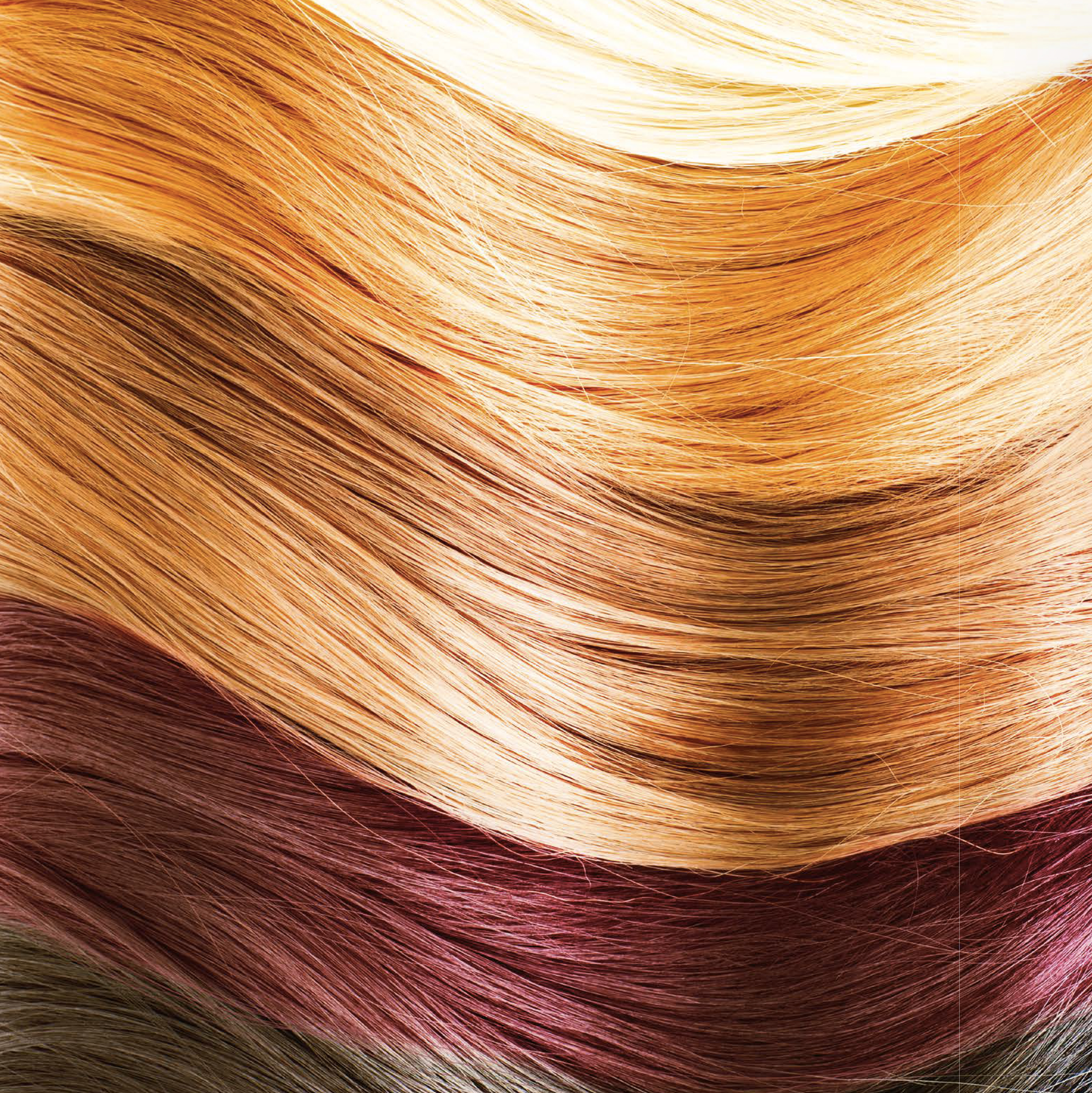By the Doctor Alexandra Dalu
We need to establish a model for treating patients suffering from hair loss in order to make consultations easier for doctors and treatment plans more straightforward for patients.
 The consultation should be comprehensive and include a detailed examination, like any other medical consultation, since hair loss is a symptom and a clinical manifestation in its own right. The advantage of any protocol is that it can be reproduced by all doctors and surgeons. It becomes a dia- gnosis tool and helps us to treat patients more quickly and efficiently. The model I have drawn up, which is inspired by the scienti- fic data available, allows us to make a medical diagnosis for the hair loss so that we can quickly match the treatment to the cause, instead of simply concluding that the hair loss was caused by temporary physiological stress or androgenic alopecia (men and women).
The consultation should be comprehensive and include a detailed examination, like any other medical consultation, since hair loss is a symptom and a clinical manifestation in its own right. The advantage of any protocol is that it can be reproduced by all doctors and surgeons. It becomes a dia- gnosis tool and helps us to treat patients more quickly and efficiently. The model I have drawn up, which is inspired by the scienti- fic data available, allows us to make a medical diagnosis for the hair loss so that we can quickly match the treatment to the cause, instead of simply concluding that the hair loss was caused by temporary physiological stress or androgenic alopecia (men and women).
CREATING A MODEL FOR TREATING HAIR LOSS IN 3 APPOINTMENTS
First appointment
The first medical consultation is standard and takes a detailed look at the medical history of the patient and their family, any past or current treatments, and their lifestyle. A clinical examination of the scalp is carried out and the patient’s vital signs are noted (blood pressure, pulse, weight).
We need to find out about the medical history of the patient and their family to help guide our diagnosis. This is the main reason for this appointment, as depending on the answers and the patient’s current condition, it will guide the diagnosis for the hair loss.
In terms of medical history, the questions specifically focus on any allergies, digestive issues, endocrinology or auto-immune problems.
A series of tests will be prescribed, with doses of hormones and vitamins, and some scans may be prescribed depending on the information given in this appointment (thyroid scan).
The clinical aspect:
The visual scales currently used to evaluate hair loss in a clinical consultation are very handy and allow us to classify the severity of the alopecia: the Norwood Hamilton scale in men and Ludwig in women. They are also a good visual guide for the patient, as they can see the improvement for themselves. There are now some very accurate cameras that are able to capture the hair’s regrowth.
Lifestyle is an important subject, as it gives us an insight into the patient’s health profile:
- Diet: Vegans and vegetarians now constitute 3% of the population at risk of being deficient in micronutrients such as iron, zinc, vitamins D, A and B12.
- Hydration (water) is a constituent of the body’s lean mass and is required for its overall metabolism.
- Stimulants (coffee, tea) with or without sugar: though caffeine is a useful psychostimulant, when consumed in excess it can have a harmful effect on the hair by thinning it through adrenal stimulation.
- Alcohol consumption with the average number of units per week (less than 7 glasses according to the WHO) because alcohol decreases growth hormone levels.
- Smoking.
- Illegal drug use.
- Fizzy drinks: phosphates chelate calcium and therefore decalcify the cells and make the body more acidic, as well as affecting glycation because of their high sugar levels. These different toxins acidify the digestive mucous membrane and prevent nutrients from being absorbed properly; the toxic contents of tobacco are deposited on the scalp and damage it.
- Sleep quality: The IGF1 produced at night has a positive effect on hair growth. The hormone naturally increases hair growth.
- Physical exercise (daily walks) has an indirect action on the appendages by producing antioxidants through the stimulation of the muscular myokines. Sport ensures the metabolism stays young. Sport reduces stress and inflammation.
- Excessive sugar consumption: sugar affects the quality of the collagen through glycation, which rigidifies it. Sugar is also responsible for the production of the inflammatory proteins interleukins and cytokines, which stimulate the premature aging of the organs and their function.
- Be careful when taking certain medicines whose side effects often include hair loss (neuroleptics, psychotro- pic, long-term corticoids, androgenic pills).
- Your job is also important: certain professions put you more at risk of coming into contact with toxic products such as dyes, perfumes, Benz aromatics which are toxic for the body and therefore for the hair.
Second medical consultation
Start of mesotherapy sessions.
Test analysis.
Allopathic treatment according to results.
Third medical consultation
Continuation of mesotherapy sessions
Tolerance to treatment and improvement of general condition. In addition to the visual Hamilton and Ludwig scales, two subjective but interesting scores are used, as they cover the essential aspects of what we want to achieve with a hair treatment.
The EPARS score which is the evaluation of the patient with 5 questions scored from 1 for very good to 10 for very bad:
- Loss
- Seborrhoea
- Itching
- Scarcity
- Mediocrity
The GAIS (Global Aesthetic Improvement Scale) grade according to doctor and patient is equally practical based on 5 subjective items:
- Very well improved
- Much improved
- Improved
- No change
- Degraded condition
Treatments
Allopathy is prescribed according to the diagnosis whose consequence is hair loss or thinning.
The list of dermatological, autoimmune and infectious pathologies that cause hair loss cannot be exhaustive.
- Treatment for an infection.
- Treatment for psoriasis, eczema, seborrheic dermatitis,allergies.
- Treatment for autoimmune diseases: scleroderma, rheumatoid polyarthritis often connected with Hashimoto and Biermer hypothyroidism.
- Treatment for IBD (celiac, Crohn’s, UC).
- Hormonal treatment in endocrinology (hypo or hyperthyroidism, Cushing’s, PCOS, prolactinoma)
- Treatment for PCOS with androgenic alopecia and/or acne: spironolactone (antiandrogenic role) and drospirenone.
- Suitable contraceptive treatment: never androgenic (Optimizette=Desogestrel), choose pills with only drospirenone (Slinda) or combined pill with drospirenone (Jasmine, Yaz, Jasminelle).
- HRT with oestrogen and progesterone and anti-hair-loss lotion with 3% Minoxidil and progesterone in a magistral formula to be applied twice a week.
- Treatment for anxiety, depression or burnout: SARIs (Fluoxetine 20, Sertraline 25) to stop the stimulation of the cortisol receptors on the follicle, since hair loss can aggravate depression and anxiety.
- Treatment for sleep issues (sleep apnoea equipment, melatonin, GABA).
- Treatment for micro nutritional deficiencies: B9, B12, D, iron, zinc, iodine, magnesium, B5, A, E, collagen.
- Phyto-therapeutic treatment: vitex agnus-castus (only for women), saw palmetto, rocket, horsetail.
- All hair loss, regardless of the cause, will be treated with allopathy as well as mesotherapy sessions with oligopep- tides, the hair’s growth factors.
Injecting growth factors
+/- meso hair vitamins
The mesotherapy sessions are carried out on a clean and dry scalp. The microinjections are performed with 30 Gauge (or 33G) mesotherapy needles, using a mesotherapy gun to cover the whole scalp. One session is carried out every week or two weeks, for a total 5 sessions. The patient should not wash their hair until two days after the session. They should use a shampoo containing nutrient- rich plants and anti-hair-loss active ingredients.
After the 5 sessions, if the patient wishes, they can conti- nue having top-up sessions once a month and/or keep up the treatment using a roller at home.
Some patients want to “pull out all the stops” in order to treat their hair loss. In this case, I suggest buying a laser and red LED to stimulate the fibroblasts (by boosting IGF1), collagen and sebum regulation, which should be used 3 times a week. The investment (between 600 and 1,000 euros) is quickly recouped, when you look at the price of in-clinic treatments. The patient can use the device to maintain the results for around ten years.
In practice, many patients suffer from chronic, unexplained and depression-causing hair loss. Many of them also suffer from hair loss after stopping mesotherapy treatment (or the famous Minoxidil), even though it worked at the time. It is a bit like a “yoyo diet”: excess weight creeps back on because we have not addressed the root cause of the weight gain and have simply restricted calories without treating it with suitable medicines.
Our hair reflects our inner health, and this is why a medical cause must be found for its loss or thinning in order to treat it in a global and optimal way.
REMINDER
There are three growth phases – anagen, catagen and telogen – in the life cycle of a hair, or rather the life cycle of a hair follicle. It is genetically programmed. This means that hair loss is likely to run in the family! More precisely, we talk about random cycles of hair life, i.e. there are 2 phases at the origin of hair permanence: the stable active phase or anagen and the stable dormant phase or telogen. The rapid transitions between these 2 phases correspond to involution (catagen). The hair is then expelled and the follicle is empty and in latency for 2 months to a year. These transitional phases depend on the balance between the various catagen factors and the factors that induce hair growth. Interleukin6 , a pro-inflammatory cytokine, is known to induce follicle regression. A less “inflamed” body has a non-inflammatory dermal papilla that is conducive to regrowth.
However, aside from any genetic factors, the follicle is subjected to exogenic factors that affect its overall health.
Many stimuli play a role in the health of the skin and its appendages: dehydration, aggressive cosmetics, tractive styling, pollution, climate, hormones (during puberty, pregnancy, childbirth, breastfeeding, premenstrual syndrome, menopause, andropause), factors that are inherent to the patient’s lifestyle (smoking, alcohol, illegal drugs, fizzy drinks, excess sugar) and some medicines. These are all factors that can trigger hair loss, and as such should be addressed in the consultation.
What is more, the cells of the skin and follicular gland are organs that are interconnected with the nervous system via its cortisol receptors. We therefore have a better understanding of the impact that severe or chronic stress has on the hair because, by increasing cortisol production in the adrenal glands, it causes the hair to become thinner.
HOW NUTRITION CAN HELP
Nutrition and micronutrition are the essential cornerstones for healthy hair, along with sufficient protein to supply the amino acids required for keratin and collagen synthesis in the hair and its muscle, the arrector pili muscle. There is also the provision of glycan sugars and hyaluronic acid synthesis, a natural component of the appendages. Lipids are required for the skin’s protective barrier and the hair sheath, as well as its hydration thanks to gly- cerol. Food provides the vitamins and antioxidant trace elements that have a role to play in the metabolism, which helps give the hair a strong structure (zinc, iron, selenium, vit. C, E, group B) and fights against general fatigue in the body.
 By the doctor Alexandra Dalu
By the doctor Alexandra Dalu
Anti-aging doctor. Mesotherapy. Nutrition. Member of the French. Endocrinology Society.
Author of two best-selling books: “Les 100 idées reçues qui vous empêchent d’aller bien” and ”Vive l’alimentation Cetogene!”
More information on alexandradalu.com












